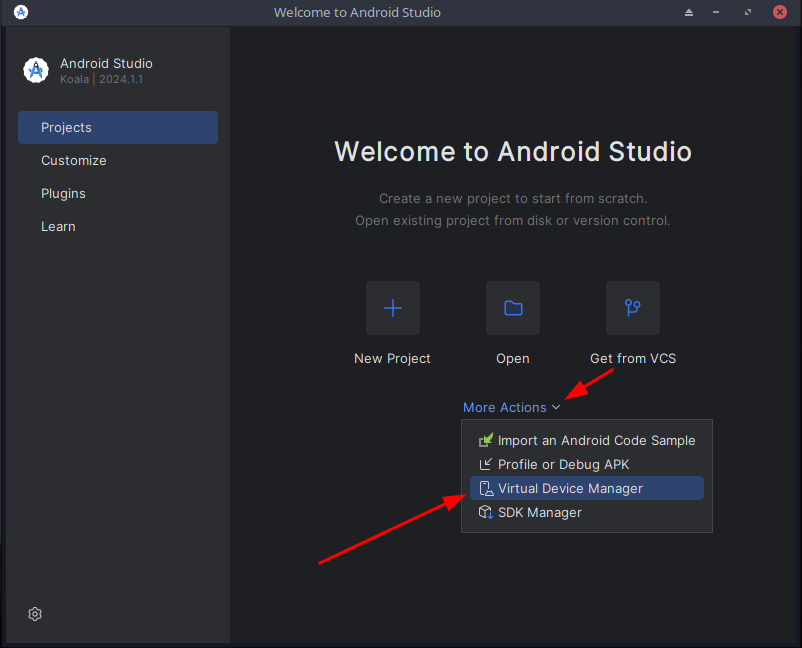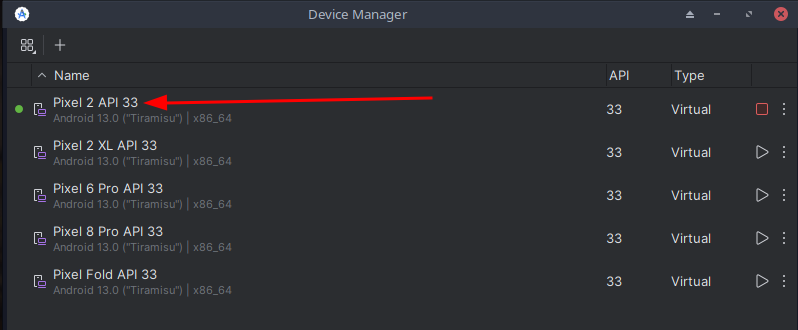This project is the solution for the Stori QA Automation Engineer Challenge.
- Node.js => 20.14.0
- npm => 10.7.0
- Android Studio => Koala 2024.1.1
- Android SDK Platform => Android 13.0 ("Tiramisu") API Level 33
- Set up
ANDROID_HOME - Android SDK Platform-Tools => 35.0.1
- Android Emulator => 34.2.15
- Java JDK => 8
- Set up
JAVA_HOME
Install Appium using npm:
npm install -g appiumInstall the UiAutomator2 driver:
appium driver install uiautomator2Lastly, just clone this repository:
git clone <url>Just call the runner with your desired browser and device:
python3 runner.py --browser <browser> --avd <avd>The argument browser could be: chrome (by default), firefox, or opera.
The argument avd is the name of the Android Virtual Device that is set up, for instance, this is my test device via the Android Virtual Devices Manger of Android Studio:
What it looks like when running on Firefox:
After the execution, the XML and HTML reports are generated in /reports/<browser>/pytest-html/report.html and /reports/<browser>/junit-xml/report.xml
- Appium => 4.0.0 - UI automation (cross-browser and cross-platform)
- Pytest => 8.2.2 - Python testing framework
- Pytest-BDD => 7.2.0 - Subset of Gherkin for Python
- Pytest-HTML => 4.1.1 - Plugin for generating HTML reports
- Git => 2.30.2 - Version Management
- Daniel Hernández - Initial work - danielhndz
- Last update: 24/07/2024
This project is licensed under the GPLv3 License - see the LICENSE.md file for details



